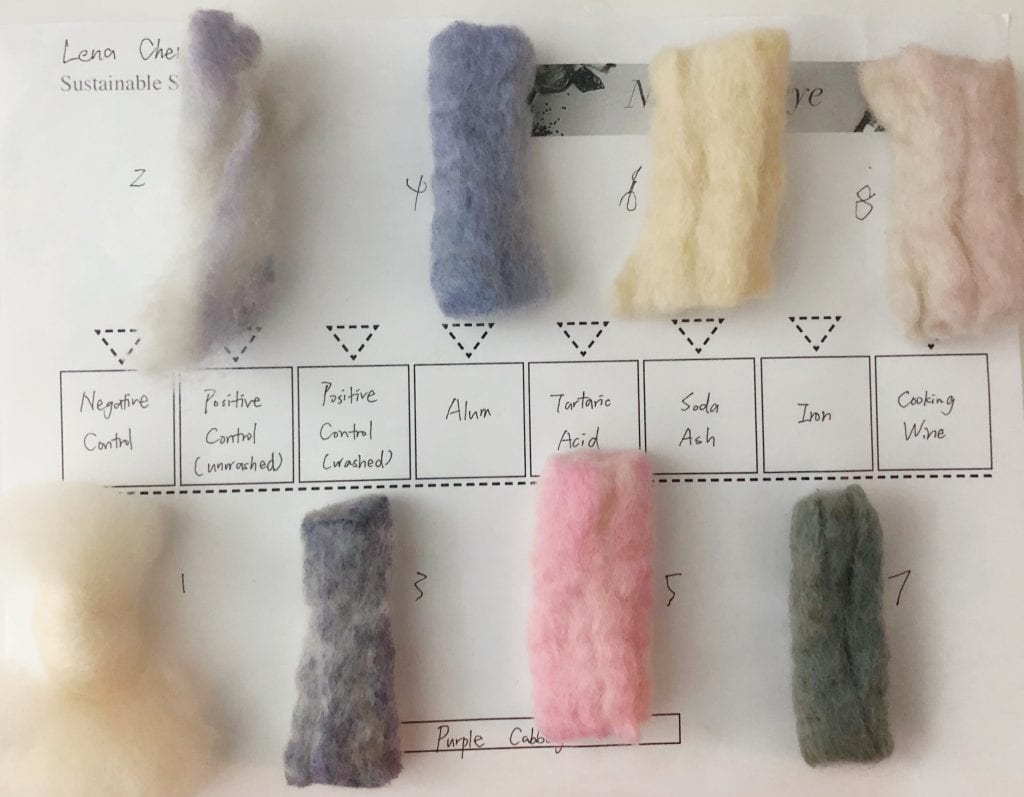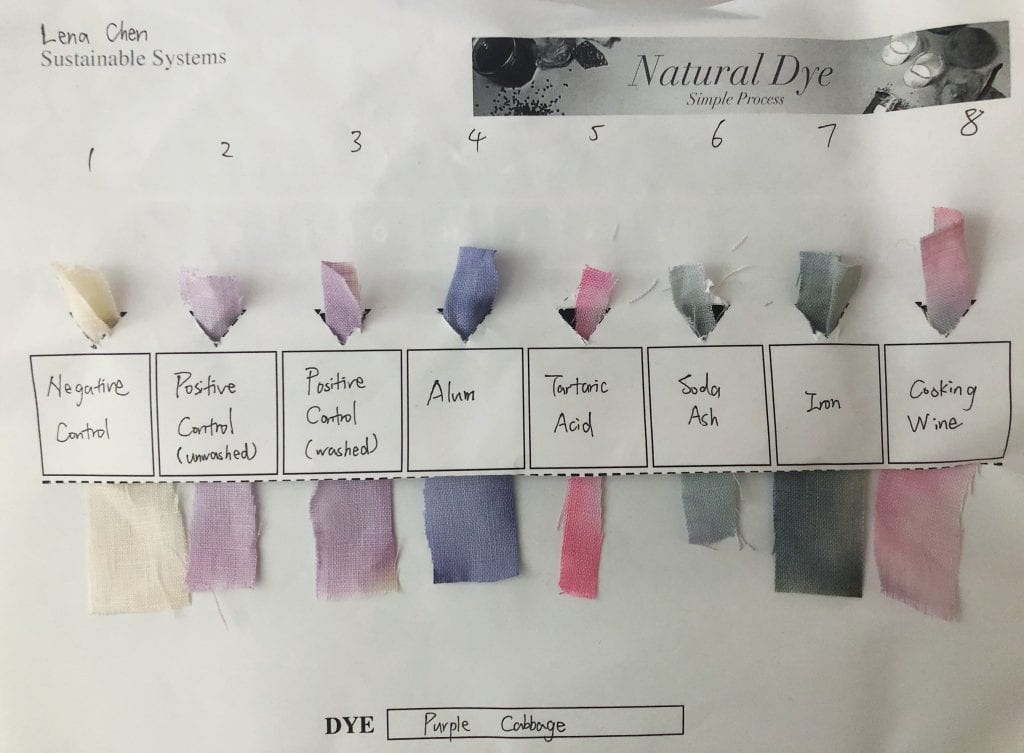Experiment Reflection Answers
1. I chose red cabbage to do the experiment. Red cabbage grows in outdoor with sufficient sunlight. It might came from Hepworth farms of Hudson Valley in Milton, New York. It take a few hours for the red cabbage to travel to stores.
2. Yes. the colors are different between the oily and clean wool samples. The ones of oily samples are more saturated, while those of clean samples are only partially dyed.
3. The dyed-rinsed samples became purple. The mordant-rinsed samples turned different colors based on the property of the mordants. The color of cotton and wool samples is basically a same color.
4. Polyester materials must be much harder than cotton and wool to dye, because it is a synthetic fabric made from petroleum so it’s essentially plastic.
5. I’m mostly satisfied, but some samples are placed too close that some colors are not pure.
6. Things the water picked up and I put down the drain:
oil from wool
soap
mordants: alum, tartaric acid, soda ash, iron, cooking wine
cabbage extract
7. I think it’s okay to put my waste water samples in the drain, because it’s only a small quantity compared to the huge amount of water waste in the drainage system. On the contrary, industrial waste can easily contaminate water because the toxic materials are too much.
8. One way to make fashion more sustainable is to replace fabric dyes with digital printing. Printing textiles with pigments, which use much less water and generate much less waste, is better way than traditional dyeing.
9. I probably will do more natural dyeing. I was surprised at the effects different mordants can create. In my own projects, I might consider using other plant material for dyeing. I haven’t consider about other vegetables or fruits so I would like to explore them. I think natural dyes are uncommon due to the time and money it takes to do, but it is definitely safer for the environment because it uses only a little chemicals compared to industrial dye.

